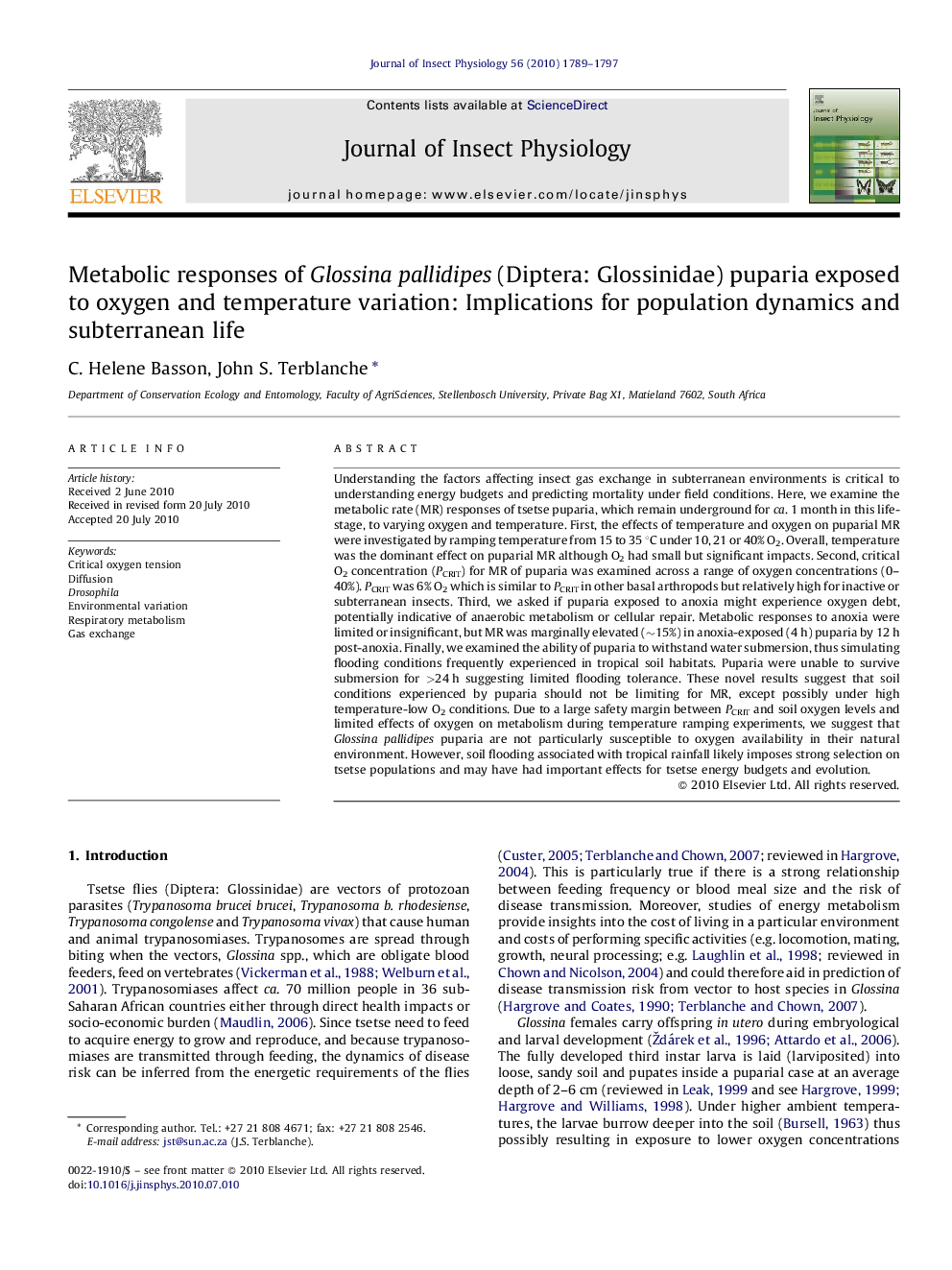| Article ID | Journal | Published Year | Pages | File Type |
|---|---|---|---|---|
| 5922068 | Journal of Insect Physiology | 2010 | 9 Pages |
Abstract
ⶠThis research article presents a novel investigation of the effects of variation in oxygen and temperature on metabolic rate (MR) modulation in tsetse puparia. ⶠWe examine the effects of temperature and oxygen on puparial MR by ramping temperature from 15 to 35 °C under three constant oxygen levels (10, 21 or 40% O2) which showed that the predominant significant effect was temperature rather than oxygen or their interaction. ⶠWe provide an estimate of critical oxygen concentration (PCRIT) for MR. PCRIT was 6% O2 which is similar to PCRIT in other basal arthropods but high for inactive or subterranean insects. ⶠWe assessed whether puparia exposed to anoxia might experience oxygen debt, potentially indicative of anaerobic metabolism or activation of cellular repair mechanisms. Metabolic responses to anoxia were limited or insignificant, but MR was marginally elevated (15%) in anoxia-exposed (4 h) puparia by 12 h post-anoxia. ⶠWe examine the ability of puparia to withstand water submersion, thus simulating flooding conditions frequently experienced in tropical soil habitats. Puparia were unable to survive submersion for >24 h suggesting limited flooding tolerance. ⶠThese novel results suggest that soil conditions experienced by puparia should not be limiting for MR, except possibly under high temperature-low O2 conditions. Due to a large safety margin between PCRIT and soil oxygen levels and limited effects of oxygen on metabolism during temperature ramping experiments, we suggest that G. pallidipes puparia are not particularly susceptible to hypoxia, although soil flooding may have had important effects for tsetse energy budgets and evolution.
Keywords
Related Topics
Life Sciences
Agricultural and Biological Sciences
Insect Science
Authors
C. Helene Basson, John S. Terblanche,
